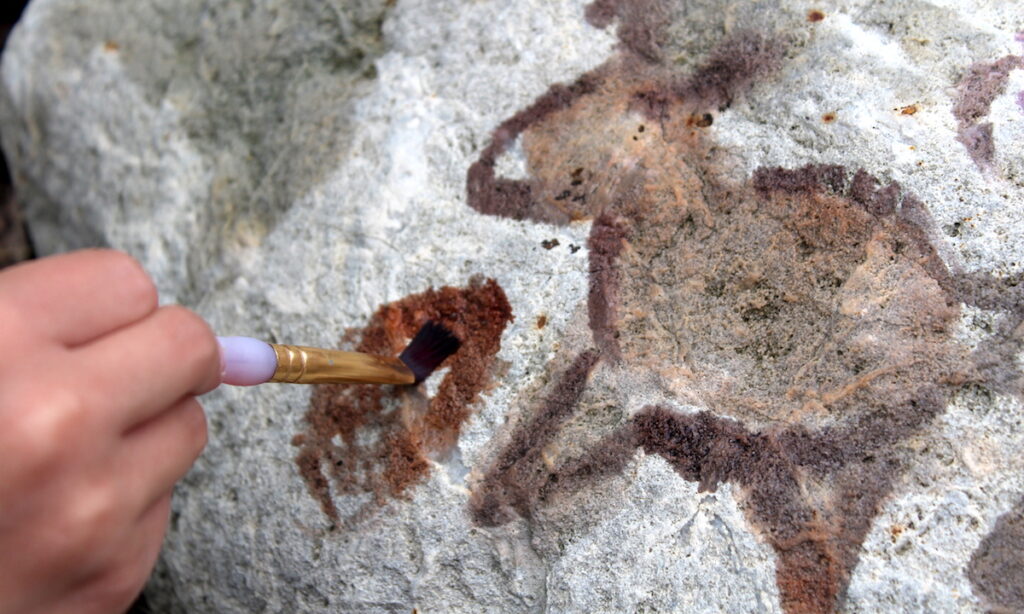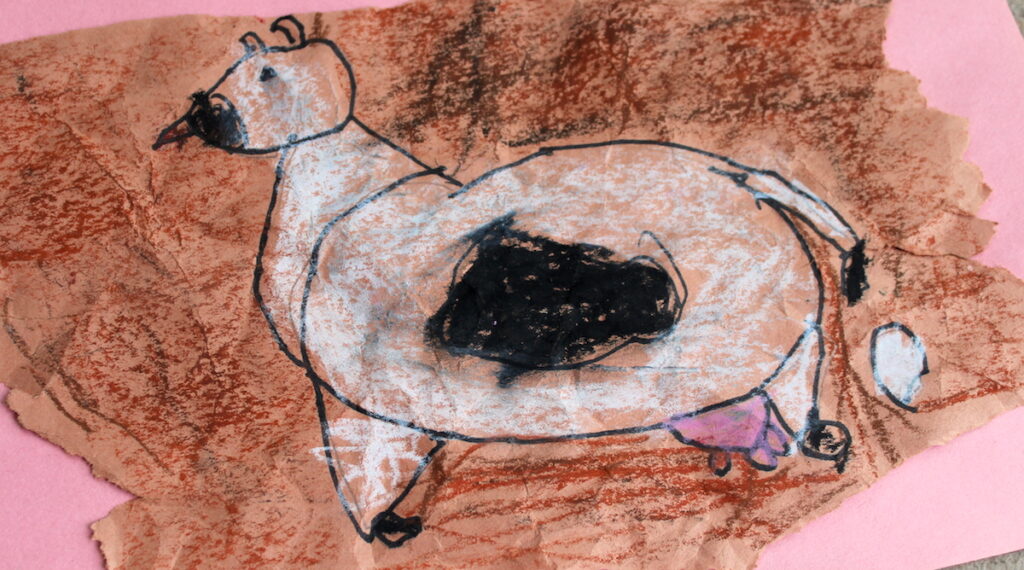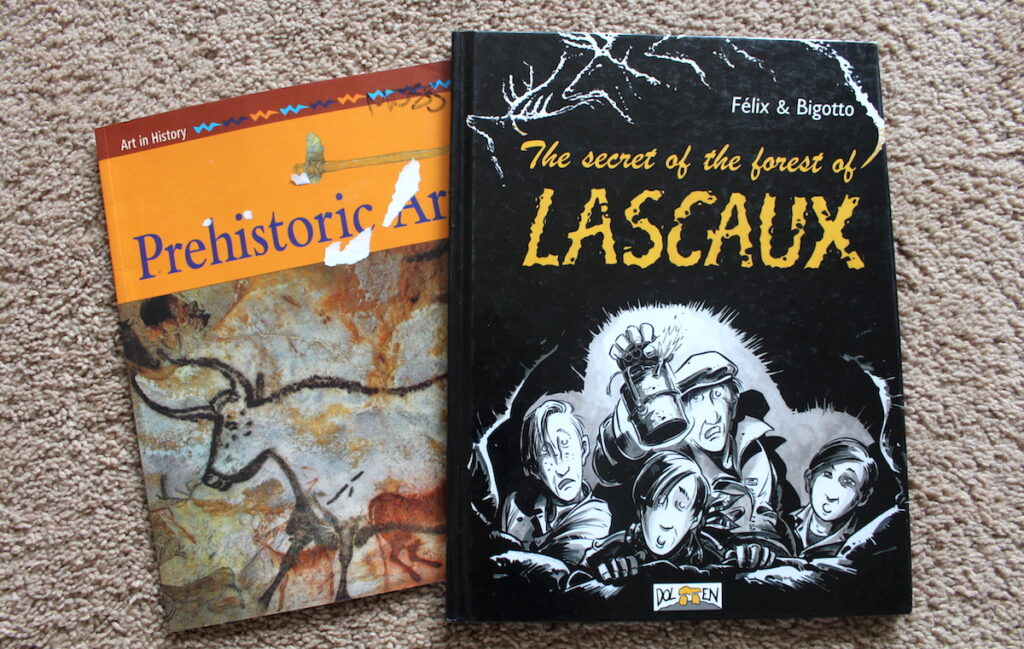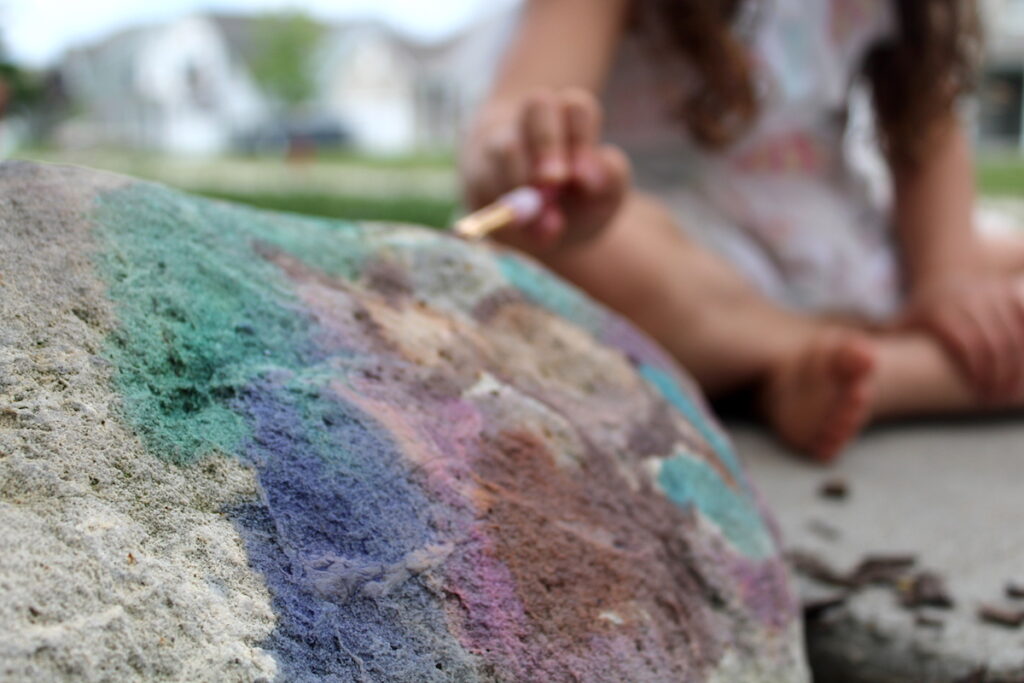With the entire canon of art history to choose from, it can be difficult to know exactly what to include in your curriculum. You want to expose your students to art from other cultures and time periods, but where do you start?
Furthermore, with the world at our fingertips, the resources available can be overwhelming. It’s important to get the details right.
This conundrum is exactly why we’ve been digging deep into some popular time periods, cultures, and art forms. If you haven’t seen them yet, be sure to check out the articles on Aboriginal Art and Gyotaku. Then, read on to find out more about another art teacher favorite, prehistoric art!
Prehistoric Art, Revisited

Much like an introductory college survey to art history, I start my second-grade art curriculum with a study of prehistoric art. As an art teacher and a lover of art history, I am always amazed by the beauty and mystery of the first artworks ever produced by humans. For me, this is the foundational understanding that helps contextualize the rest of art history for my young artists.
The Basics
More than 20,000 years ago, prehistoric people entered caves and began an artmaking practice. Using the materials they had, they adorned the rock walls with artwork depicting the animals they encountered in everyday life. (For a comprehensive overview, check out this series of excellent essays offered by the Metropolitan Museum of Art.)
The environmental conditions of these caves led to the preservation of these artworks for vast periods of time. Over the last century, these caves have been newly rediscovered and studied, as we strive to understand the world’s first artists.
The BIG Idea: Art Came Before Writing
This is a powerful truth, and it should be at the center of any prehistoric cave art lesson. Prehistoric cave art is evidence that making art is fundamental to what it means to be a human being. Art helps us transcend merely surviving as a species. We have always needed to express ourselves and create, even from the beginning.
What Do These Paintings Mean? We Can’t Know!
Depending on the source you read, you will encounter a variety of theories. There are many interpretations of the inspiration and motivation behind these paintings; they were magical depictions of the hunt meant to give luck or power, they were part of a sacred ritual, or they were just a way to record significant species important to prehistoric people.
Whatever the reasons, the reality is that while we can infinitely speculate, we cannot ever know the real meaning behind these artworks. This is an exciting truth because it opens up all sorts of interesting discussions with our students about artist intent versus viewer interpretation. How will their artwork be interpreted thousands of years from now, when they are not around to explain it?
Many of the Discoveries Were Made by Children
Despite the fact that an overview of prehistoric cave art is an essential foundational understanding of a study of art history, it is also incredibly inspiring for our youngest students. In reality, the modern exploration of prehistoric caves is filled with awe-inspiring stories of kids making the most significant discoveries.
- Altamira was found by a Maria, the five-year-old daughter of Marcelino Sanz de Sautuloa. He was aware of the cave on their property but hadn’t seen the artwork. It was her exploration that uncovered the masterpieces. You can read more on this fascinating PBS site.
- According to the Lascaux website, several high school boys and their dog found Lascaux cave, while exploring in 1940.
My students are usually rapt by the information that these caves were found by children. I like to turn out the lights and share images of the cave interiors on my projector, to add to the sense of mystery.
Making it Relevant to Your Students’ Lives
Since we cannot definitively know the reasons for the creation of these paintings, I often have my students hypothesize. Typically, I will share some of the more popular theories and ask the students which they find most persuasive. Usually, they gravitate toward the opinion that the artwork gave prehistoric hunters power or luck during the hunt. The idea that these artworks are a sort of magical shopping list appeals to my students.

To create a personal connection, I ask my students to go beyond copying the ancient style. After they have experimented with this stylistic drawing method, I ask them to create a modern interpretation. I love seeing what they would “hunt.” Typically, my second graders choose to depict their favorite foods. Pizza, cheeseburgers, and ice cream sundaes seem to be favorite topics!
If you are looking for more ways to help your students connect to art history, you’ll want to check out the in-depth information included in the PRO Learning Packs Art History in the Elementary Art Room and Art History in the Secondary Art Room. You’ll explore a wide variety of instructional strategies to help engage students with this fascinating topic.
We also offer an entire course dedicated to the subject. In Integrating Art History, students survey hundreds of years of art as they simultaneously plan rich learning opportunities for students in diverse and dynamic settings. Don’t miss it!
Prehistoric Art Researched
Like so many topics in art history, it can feel as though you know a lot about pre-historic artwork, but my research uncovered a wealth of information that was new to me. Here are a few of my favorite nuggets of new learning.
The Subject Matter Is MUCH Broader Than Deer and Bison
We are all familiar with the most famous images from Altamira and Lascaux; of deer, bison, and even the great bull. But, the list of animals doesn’t stop there. Your students will be fascinated to see there are many other unusual creatures in these paintings such as…
- Wildcats (Chauvet cave)
- Bears (Lascaux and Chauvet cave, as shown by the Bradshaw Foundation)
- Rhinos (Chauvet cave, as shown by the Bradshaw Foundation)
Prehistoric Artists Were NOT Primitive
It is easy to imagine cave people, fumbling in the dark, accidentally inventing art. But, the reality is likely much more fascinating. Prehistoric people were making considerable advances in the techniques of their artmaking
Here are just a few of the things they were up to:
- Using lamps to light their artwork
- Building scaffolding to reach higher rocks
- Seeking out specific surface features that accentuated their compositions
- Not only painting but also engraving
The Theory of Passing Time
While I thought I had heard most of the prevailing popular theories of why the images were created, I was delighted to be exposed to a new one. Some evidence shows the animals were always drawn in the same order. Thus, the theory suggests the animals are depicted seasonally, and the paintings show a passage of time, based on characteristics of those species at various times of the year.
Prehistoric Art Revamped
After researching this topic extensively, there are several modifications I plan to make to my current unit.
Rethinking the Artmaking Surface
Couple the facts that many cave paintings include engraved portions and prehistoric artists sought out rock formations to emphasize their compositions, and suddenly, asking students to represent this on flat construction paper doesn’t seem so relevant.
Next year, I plan to make two modifications.
- Paint a sample rock
In most teaching situations, it isn’t feasible to provide students with real stones on which to paint. But, I think it is possible to offer that experience as a station. So, I am planning to bring a single boulder to school. I plan to give my students the experience of painting on an actual rock, using water and brushes at a station in the art room.

- Switch from paper to cardboard
I am intrigued and excited by the idea that prehistoric art pairs painting with engraving. I am hoping that transitioning to a thicker surface (like corrugated cardboard) will allow my students to press into the surface with pencils, styluses, and other tools.
Apply Problem–Based Learning to Prehistoric Art
The fascinated advances being made by prehistoric people astonished me. I think my students would share the same ingenuity and creativity when faced with a similar challenge. So, instead of just telling them about these incredible facts, I plan to help them discover this knowledge through problem-based learning.
I think implementing this idea will be simple. I plan on providing a fictitious list of the contents of a cave, and asking my students to brainstorm ways of using these materials to light the area adequately, and paint high up on the cave walls. After letting them hypothesize and plan for a while, I’ll share how archeologists think prehistoric people accomplished these same tasks.
Confront the Question: Am I Teaching Cave Art in a Eurocentric Way?
Finally, many of the best-known examples of cave art are found in Europe: Chauvet, Lascaux, Altamira, and others. But, significant examples of cave art are not limited to this region of the world. In fact, in another installment of “Revisited, Researched, Revamped,” I found that southeast Asia and Australia may be home to even older, lesser known examples. Even more interesting, The Met Museum’s articles point out that the Apollo 11 and Wonderwerk cave stones, found in Africa, may be the oldest art in the world. So why are so many art history texts focused on the European discoveries? This fall, I plan to share cave art from many regions of the world.
Resources

Finally, there are many fantastic resources available for teachers who want to learn more about prehistoric art.
Here are a few I would recommend.
- The Lascaux Cave website
Be sure to check out the virtual tour! - The First Drawing by Mordicai Gerstein
This book is fiction, but really captures what it might have meant to invent drawing. - The Secret of the Forest of Lascaux by Felix and Bigotto
I purchased this amazing graphic novel at an Art Institute of Chicago exhibition, but previous printings are available on Amazon. - Prehistoric Art by Susie Hodge
This is another “oldie but goodie,” that presents examples from around the world, not just Europe.
Prehistoric art is sure to capture your students’ interest. Use the information and resources above to make sure you’re presenting the whole picture to them!
How do you teach about prehistoric art?
What resources do you use to enrich your prehistoric lessons?
Magazine articles and podcasts are opinions of professional education contributors and do not necessarily represent the position of the Art of Education University (AOEU) or its academic offerings. Contributors use terms in the way they are most often talked about in the scope of their educational experiences.






